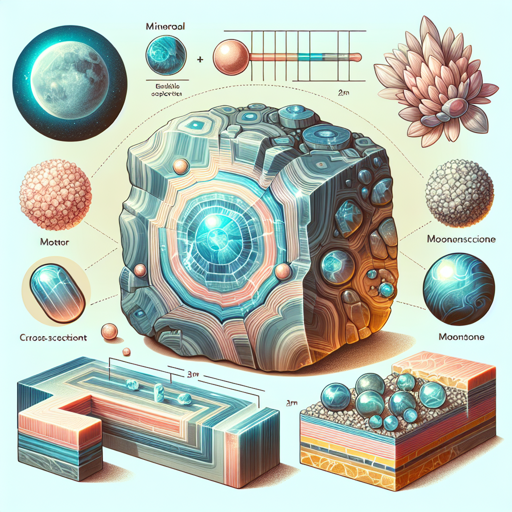Unveiling the Mysteries of Moonstone: A Geological Exploration
Delve into the fascinating geological journey of moonstone, a gemstone adored for its ethereal glow.

Introduction
Have you ever held a piece of the moon in your hands? Well, moonstone comes quite close with its soft, ethereal glow that’s reminiscent of moonlight. A favorite amongst gem enthusiasts and jewelers, moonstone carries an air of mystery and magic. This article will take you on a journey into the fascinating geology of moonstone, exploring the unique conditions that give rise to this celestial gem.
The Formation of Moonstone
Moonstone belongs to the feldspar group, constituting approximately 60% of the Earth’s crust. The magic begins deep within the Earth’s mantle, where these minerals form under high pressure and temperature. Over time, they can reach the surface through geological activity like volcanic eruptions or tectonic movements.
Moonstone is primarily composed of two types of feldspar: orthoclase and albite. Initially, these minerals are intermingled. As they cool, they separate into alternating layers. When light falls between these thin, flat layers, it scatters in many directions, creating the phenomenon known as adularescence – the enchanting play of light that moonstone is famous for.
Unique Properties of Moonstone
Moonstones are prized for their adularescence, the shimmering or billowy effect, which seems to roll across the gem’s surface as you change its angle. This optical phenomenon distinguishes moonstone from other gemstones and contributes to its mystical allure.
| Property | Description |
|---|---|
| Color | Moonstone comes in a range of colors, from colorless to white, grey, peach, green, and even a rare blue. |
| Clarity | Moonstone is translucent to opaque, with the most valuable stones displaying a clear, colorless body. |
| Cut | Moonstones are usually cut en cabochon to best display their adularescence. |
| Hardness | With a hardness of 6 to 6.5 on the Mohs scale, moonstone is relatively soft, requiring careful handling to prevent scratches. |
“Moonstone - it’s a name that evokes the visual properties of this gemstone. It’s like holding a piece of the moon with a soft glow seeming to emanate from within.” - Gemologist John Dyer
Moonstone Around the World
While moonstone can be found worldwide, the finest specimens come from Sri Lanka. Other notable sources include India, Madagascar, Burma, and the United States. The geographical source can influence the moonstone’s color and quality, adding another layer of intrigue to its story.
For more in-depth knowledge about moonstone and its geological formation, visit the Gemological Institute of America.
Conclusion
Moonstone is indeed a geological marvel. The intricate processes that occur beneath the Earth’s surface to create this gemstone are as mesmerizing as the stone itself. As we hold a piece of moonstone, we are not just holding a beautiful gem; we are holding a piece of our planet’s dynamic, ever-changing story.